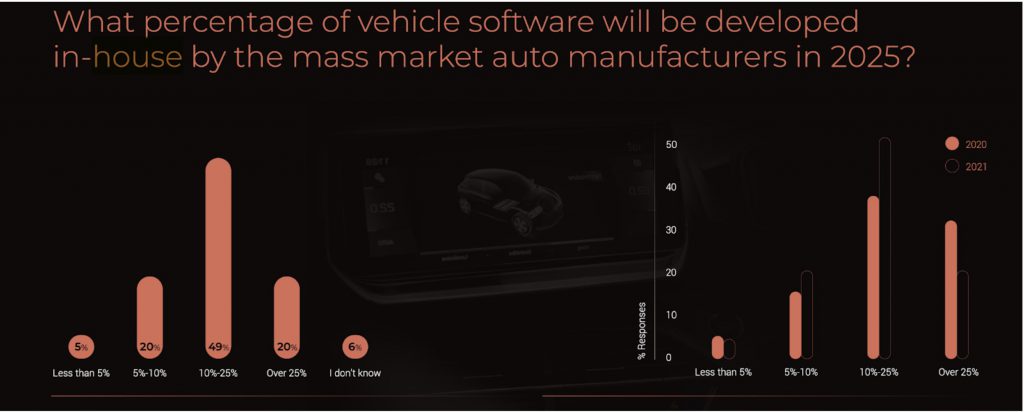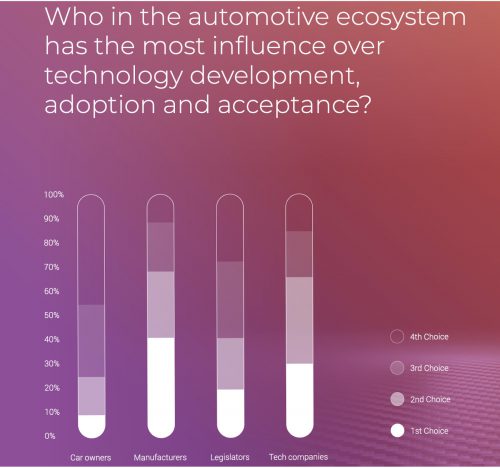Before software started to dominate vehicle production, the balance in the automotive ecosystem was clear and well known: Tier-1s supply parts, mechanics, hardware and software, whereas OEMs own the design, assembly and marketing. Today, and looking forward, as software is starting to supersede mechanics in vehicles, and the core of the vehicle is changing from internal combustion to electric, the balance in the automotive ecosystem is also changing.
The shakeup in roles does not necessarily mean some parties become obsolete, but rather that all parties have the opportunity to collaborate for mutual growth.
Let’s take a look at trends in key players of the automotive ecosystem:
Chipset providers are showing signs of growing their offering from hardware only to include software and services. For example, Mobileye’s acquisition of Moovit is a clear move to a full robotaxi service. Qualcomm’s recent acquisition of Veoneer signals the next phase of their complete software and chip platform for driver-assistance systems.
Tier 1 suppliers are displaying leadership in software development and innovation to continuously bring value and skills to OEMs. Examples include Continental’s purchase of Argus Cyber Security in order to strengthen and enhance its capabilities in automotive cyber security and LG’s similar venture with the acquisition of Cybellum.
Aurora Labs recently collaborated with Strategy Insights to conduct an Automotive Software survey where we polled over 150 industry leaders for insights on trends in automotive software. Based on the results from this survey, OEMs are estimated to move between 10-25% of software development in-house by 2025. (See complete survey report for more details)
This shift is very logical – as software becomes a differentiator and an integral piece of the vehicle, car makers must have competencies and transparency into the code they deploy in their vehicles.
Car manufacturers can opt to move in two directions: the ‚Apple‘ or ‚Tesla‘ method of complete end-to-end vertical integration and control, or for a collaborative ecosystem. It is our belief that the industry will move towards the latter.
If we look at the mobile phone industry example, although Apple has shown tremendous success with its vertical integration strategy, other companies such as Samsung have also experienced great profits through a thriving ecosystem by utilizing Android operating systems and multiple hardware suppliers.
Based on the 2021 Automotive Software Survey, there is no decisive answer as to which player today has the most influence over software development, a trend that signals a period of upcoming changes.
Cooperation and collaboration within an ecosystem drive greater innovation, lowering of costs and increase in revenue. The automotive industry currently stands at the brink of such growth, which will be driven by all participants. The new mode of operation has room for each party to evolve and work in cooperation, rather than compete with each other.
Naturally, there may be a period of unrest during the transition to the new era, with each player in the ecosystem attempting to own a bigger piece of the value chain, but this is expected to settle as the new lines are drawn.
This evolution will require more than collaboration, but will also be driven by regulation and technological advancements. Standardization and validation throughout complex and interrelated systems are being worked on around the globe. And close to our hearts at Aurora Labs, AI-powered software intelligence technologies will be the enablers for transparency, evidence, authentication, testing and updating of systems supplied by different players in the ecosystem.
To learn more about trends in the automotive software industry, read the 2021 Automotive Software Survey Report.








 5 min read
5 min read